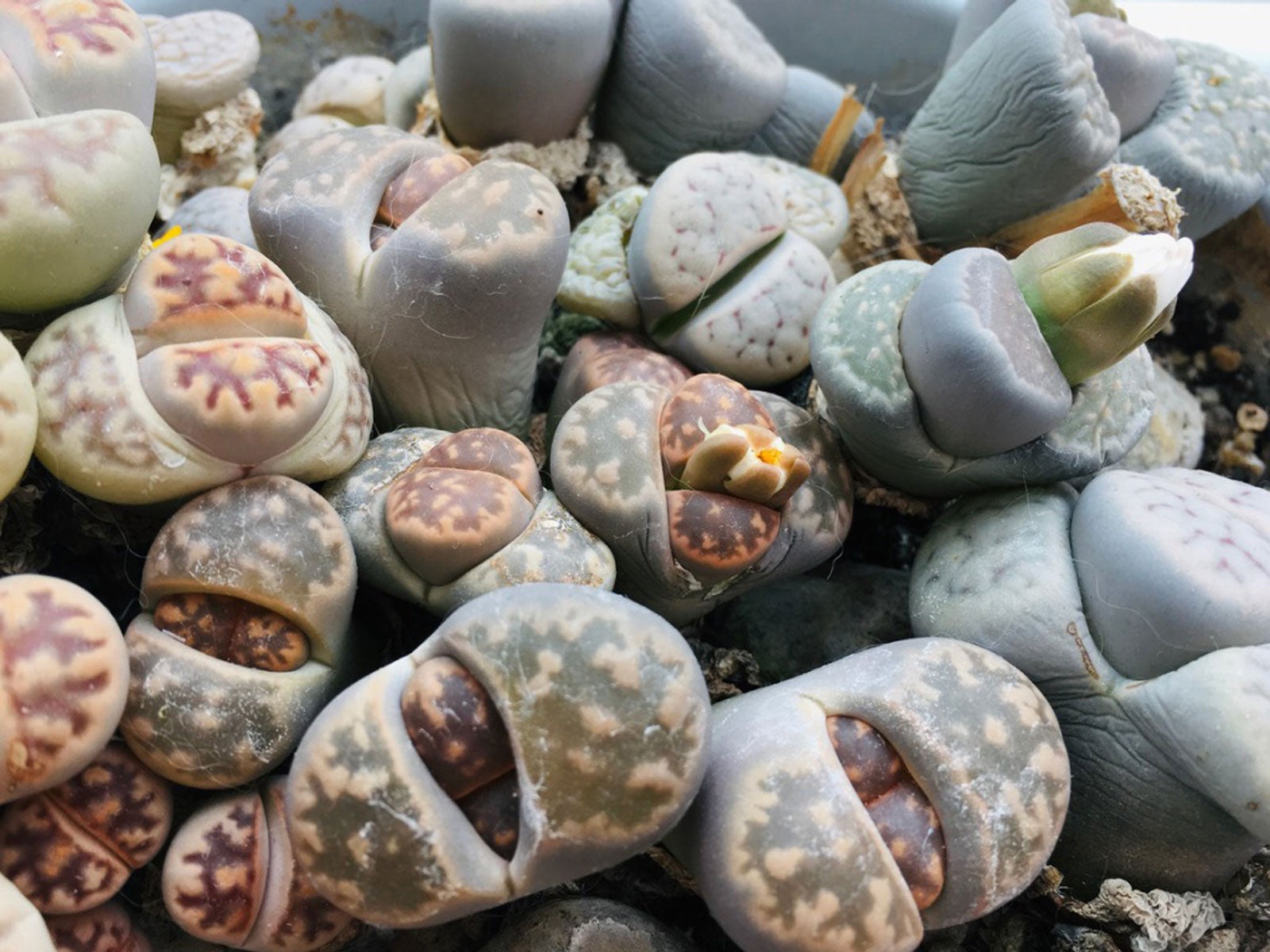Lithops Succulent: How To Grow Living Stone Plants


Lithops plants are often called “living stones” but they also look a bit like cloven hooves. These small, split succulents are native to the deserts of South Africa but are commonly sold in garden centers and nurseries. Lithops thrive in compacted, sandy soil with little water and blistering hot temperatures. While relatively easy to grow, a little information on lithops will help you learn how to grow living stone plants so that they thrive in your home.
Information on Lithops
There are numerous colorful names for plants in the Lithops genus. Pebble plants, mimicry plants, flowering stones, and of course, living stones are all descriptive monikers for a plant that has a unique form and growth habit. Lithops are small plants, rarely getting more than an inch (2.5 cm.) above the soil surface and usually with only two leaves. The thick, padded leaves resemble the cleft in an animal's foot or just a pair of green- to grayish-brown stones clustered together. The plants have no true stem and much of the plant is underground. The resulting appearance has the double attribute of confusing grazing animals and conserving moisture.
Lithops Succulent Adaptations
Lithops grow in inhospitable areas with limited water and nutrients. Because the majority of the plant's body is below ground, it has minimal foliar space to gather the sun's energy. As a result, the plant has developed a unique way of enhancing solar collection by means of “windowpanes” on the surface of the leaf. These transparent areas are filled with calcium oxalate, which creates a reflective facet that increases light penetration. Another fascinating adaptation of lithops is the long life of the seed capsules. Moisture is infrequent in their native habitat, so the seeds can remain viable in the soil for months.
How to Grow Living Stones Plants
Growing living stones in pots is preferred for most but the hottest zones. Lithops need a cactus mix or potting soil with some sand incorporated. The potting media needs to dry before you add moisture and you must place the pot in as bright an area as possible. Place the plant in a southern facing window for optimum light entry. Propagation is through division or seed, although seed-grown plants take many months to establish and years before they resemble the parent plant. You can find both seeds and starts on the Internet or at succulent nurseries. Adult plants are common at even big box nurseries.
Lithops Care
Lithops care is easy as long as you remember what type of climate the plant originates from and mimic those growing conditions. Be very careful, when growing living stones, not to overwater. These little succulents do not need to be watered in their dormant season, which is fall to spring. If you wish to encourage flowering, add a diluted cactus fertilizer in spring when you commence watering again. Lithops plants do not have many pest problems, but they may get scale, moisture gnats, and several fungal diseases. Watch for signs of discoloration and evaluate your plant often for immediate treatment.
Sign up for the Gardening Know How newsletter today and receive a free copy of our e-book "How to Grow Delicious Tomatoes".

Bonnie Grant is a professional landscaper with a Certification in Urban Gardening. She has been gardening and writing for 15 years. A former professional chef, she has a passion for edible landscaping.